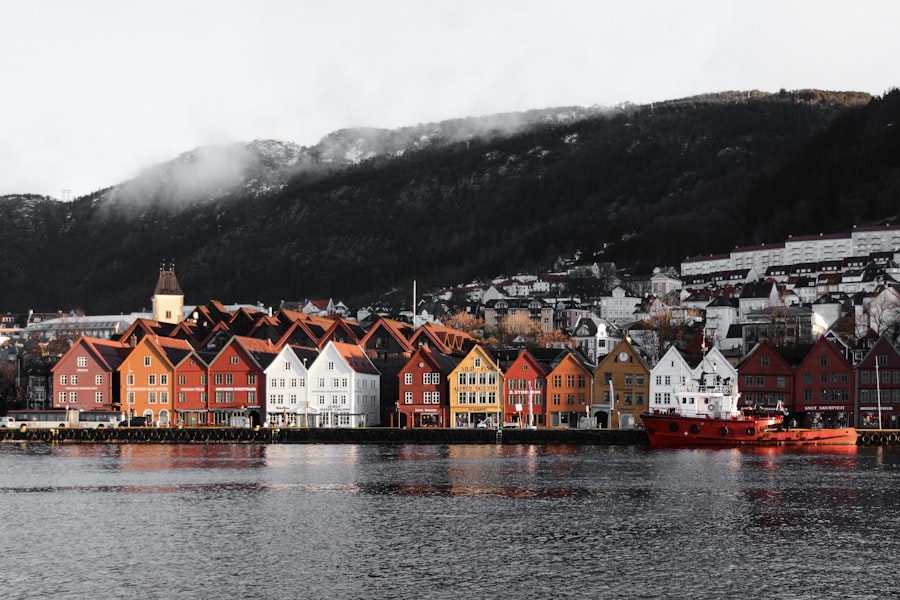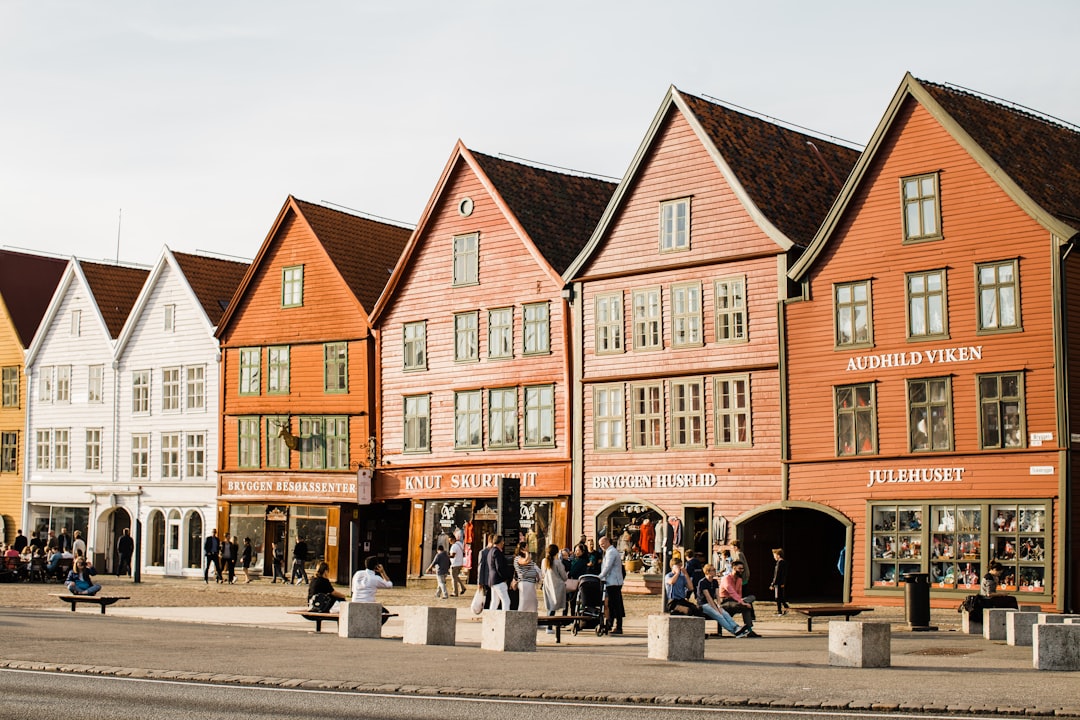As the festive season approaches, the air in Norway becomes infused with the delightful aromas of baking, signalling the arrival of Julekaker, or Christmas cookies. These traditional treats are not merely confections; they embody the spirit of Norwegian culture and the warmth of family gatherings during the holiday season. Each cookie tells a story, often passed down through generations, and is a testament to the rich culinary heritage of Norway.
The preparation and enjoyment of Julekaker are integral to Christmas celebrations, bringing families together in a shared experience of baking and feasting. Julekaker are more than just sweet indulgences; they represent a cherished tradition that unites Norwegians in their love for festive flavours and customs. From the spiced warmth of Pepperkaker to the delicate crispness of Krumkaker, each variety offers a unique taste of Norway’s winter festivities.
As families gather to bake these cookies, they create lasting memories, reinforcing bonds and celebrating their cultural identity. In this article, we will explore the history and significance of Julekaker, delve into the seven traditional varieties, and provide recipes for you to recreate these festive delights in your own kitchen. Your journey to a smooth relocation starts here. Talk one-on-one with a Norway Relocation specialist and turn your plan into a reality.
Summary
- Julekaker are traditional Norwegian Christmas cookies that hold great significance in Norwegian culture.
- The seven traditional Julekaker include Pepperkaker, Krumkaker, Berlinerkranser, Sandkaker, Sirupsnipper, Goro, and Fattigmann.
- Pepperkaker are spiced gingerbread cookies, Krumkaker are thin, crispy waffle cookies, and Berlinerkranser are buttery, almond-flavoured cookies.
- Sandkaker are traditional Norwegian shortbread cookies, Sirupsnipper are molasses and spice cookies, and Goro are diamond-shaped, cardamom-flavoured cookies.
- When serving and enjoying Julekaker during the festive season, consider pairing them with hot drinks like mulled wine or hot chocolate for a truly Norwegian experience.
History and Significance of Julekaker in Norwegian Culture
The origins of Julekaker can be traced back to ancient Norse traditions, where feasting during the winter solstice was a way to celebrate the return of light after the dark months. As Christianity spread through Norway, these pagan customs were intertwined with new religious practices, leading to the creation of unique holiday traditions that included baking special cookies for Christmas. Over time, Julekaker evolved into a symbol of hospitality and generosity, with families often preparing large batches to share with friends and neighbours.
In Norwegian culture, the act of baking Julekaker is steeped in meaning. It is a time for families to come together, often involving children in the process, teaching them about their heritage while creating delicious treats. The cookies are typically enjoyed during festive gatherings, served alongside warm drinks like gløgg (mulled wine) or coffee.
The sharing of Julekaker is a gesture of goodwill and community spirit, reinforcing social ties and fostering a sense of belonging during the holiday season.
The Seven Traditional Julekaker: A Brief Overview

Norwegian Christmas cookies come in various shapes and flavours, but seven traditional varieties stand out as quintessential Julekaker. Each cookie has its own unique characteristics and history, making them beloved staples during the festive season. The first is Pepperkaker, spiced gingerbread cookies that are often cut into intricate shapes and decorated with icing.
These cookies are synonymous with Christmas in Norway and are frequently used to create elaborate gingerbread houses. Next is Krumkaker, which are thin, crispy waffle cookies rolled into cones and often filled with whipped cream or other sweet fillings. Their delicate texture and elegant presentation make them a favourite at holiday gatherings.
Berlinerkranser are buttery cookies flavoured with almonds, shaped into rings and often adorned with a sprinkle of sugar. Sandkaker, on the other hand, are traditional shortbread cookies that melt in your mouth, offering a rich buttery flavour that is hard to resist. Sirupsnipper are another popular choice; these molasses and spice cookies have a distinctive chewy texture and are often cut into diamond shapes.
Goro are diamond-shaped cookies infused with cardamom, known for their crispiness and delightful aroma. Lastly, Fattigmann are deep-fried ribbon-shaped cookies that boast a rich flavour and a satisfying crunch. Together, these seven varieties create a diverse array of flavours and textures that embody the essence of Norwegian Christmas celebrations.
Recipe for ‘Pepperkaker’: Spiced Gingerbread Cookies
To embark on your journey into the world of Julekaker, let’s start with the beloved Pepperkaker. This recipe captures the essence of Norwegian gingerbread cookies, perfect for decorating or simply enjoying as they are. Ingredients:
– 250g unsalted butter
– 250g brown sugar
– 1 dl syrup (preferably dark)
– 2 tsp ground ginger
– 2 tsp ground cinnamon
– 1 tsp ground cloves
– 1 tsp baking soda
– 1 kg all-purpose flour
– Icing sugar for decoration (optional) Instructions:
1.
In a large saucepan, melt the butter over low heat. Once melted, stir in the brown sugar and syrup until well combined.
2. Remove from heat and add the spices and baking soda.
Gradually mix in the flour until a smooth dough forms.
3. Wrap the dough in plastic wrap and refrigerate for at least 24 hours to allow the flavours to develop.
4. Preheat your oven to 180°C (350°F).
Roll out the dough on a floured surface to about 5mm thick.
5. Use cookie cutters to create your desired shapes and place them on a baking tray lined with parchment paper.
6. Bake for 8-10 minutes or until lightly golden.
Allow to cool before decorating with icing sugar if desired.
Recipe for ‘Krumkaker’: Thin, Crispy Waffle Cookies
Next on our list is Krumkaker, which are not only delicious but also visually stunning when filled with cream or fruit. Ingredients:
– 200g unsalted butter
– 200g sugar
– 4 eggs
– 300g all-purpose flour
– 1 tsp ground cardamom
– A pinch of salt Instructions:
1. Begin by melting the butter in a saucepan and allowing it to cool slightly.
2.
In a mixing bowl, whisk together the sugar and eggs until light and fluffy.
3. Gradually add the melted butter to the egg mixture while continuing to whisk.
4. Sift in the flour, cardamom, and salt, mixing until just combined.
5.
Preheat your Krumkake iron according to the manufacturer’s instructions.
6. Pour a small amount of batter onto the centre of the iron and close it gently. Cook for about 30 seconds or until golden brown.
7.
Carefully remove the cookie from the iron and roll it around a cone-shaped form while still warm. Allow it to cool completely before filling.
Recipe for ‘Berlinerkranser’: Buttery, Almond-flavoured Cookies

Berlinerkranser are delightful ring-shaped cookies that offer a rich almond flavour. Ingredients:
– 250g unsalted butter
– 200g sugar
– 2 eggs
– 500g all-purpose flour
– 100g ground almonds
– A pinch of salt
– Pearl sugar for decoration Instructions:
1. Cream together the butter and sugar in a mixing bowl until light and fluffy.
2.
Beat in the eggs one at a time until well incorporated.
3. Gradually add the flour, ground almonds, and salt until a soft dough forms.
4. Preheat your oven to 180°C (350°F) and line a baking tray with parchment paper.
5.
Roll small pieces of dough into ropes about 1cm thick and shape them into rings.
6. Place on the baking tray and sprinkle with pearl sugar before baking for 10-12 minutes or until lightly golden.
Recipe for ‘Sandkaker’: Traditional Norwegian Shortbread Cookies
Sandkaker are classic shortbread cookies that melt in your mouth. Ingredients:
– 250g unsalted butter
– 200g sugar
– 1 egg yolk
– 500g all-purpose flour
– A pinch of salt Instructions:
1. Cream together the butter and sugar until light and fluffy.
2.
Add the egg yolk and mix well.
3. Gradually incorporate the flour and salt until a soft dough forms.
4. Preheat your oven to 180°C (350°F) and grease your Sandkake tins.
5.
Press the dough into the tins evenly and bake for about 10-12 minutes or until lightly golden.
6. Allow to cool before gently removing from the tins.
Recipe for ‘Sirupsnipper’: Molasses and Spice Cookies
Sirupsnipper are chewy cookies that offer a delightful blend of spices. Ingredients:
– 200g unsalted butter
– 200g brown sugar
– 1 dl dark syrup
– 1 tsp ground ginger
– 1 tsp ground cinnamon
– 1 tsp baking soda
– 500g all-purpose flour Instructions:
1. In a saucepan, melt the butter over low heat before adding brown sugar and syrup.
2.
Stir in spices and baking soda before gradually adding flour until a dough forms.
3. Chill for at least an hour before rolling out on a floured surface.
4. Cut into diamond shapes and place on a lined baking tray.
5.
Bake at 180°C (350°F) for about 10 minutes or until set.
Recipe for ‘Goro’: Diamond-shaped, Cardamom-flavoured Cookies
Goro are known for their unique flavour profile thanks to cardamom. Ingredients:
– 250g unsalted butter
– 200g sugar
– 2 eggs
– 500g all-purpose flour
– 1 tsp ground cardamom Instructions:
1. Cream together butter and sugar until fluffy before adding eggs one at a time.
2.
Mix in flour and cardamom until combined.
3. Roll out thinly on a floured surface before cutting into diamond shapes.
4. Bake at 180°C (350°F) for about 10 minutes or until lightly golden.
Recipe for ‘Fattigmann’: Deep-fried, Ribbon-shaped Cookies
Fattigmann are deep-fried delights that add an element of indulgence to your festive spread. Ingredients:
– 250g unsalted butter
– 200g sugar
– 2 eggs
– 500g all-purpose flour
– A pinch of salt
– Oil for frying Instructions:
1. Cream together butter and sugar before adding eggs one at a time.
2.
Gradually mix in flour until a soft dough forms.
3. Roll out thinly before cutting into ribbons.
4. Deep-fry in hot oil until golden brown before draining on paper towels.
Tips for Serving and Enjoying Julekaker during the Festive Season
As you prepare your Julekaker this festive season, consider how best to serve these delightful treats to enhance their enjoyment. Presentation plays an important role; consider arranging your cookies on decorative platters or in festive tins that can be gifted to friends or family members as tokens of goodwill. Pairing your Julekaker with traditional beverages can elevate the experience further; serving them alongside gløgg or hot chocolate creates a warm atmosphere perfect for holiday gatherings.
Additionally, consider hosting a cookie exchange party where friends can bring their own baked goods to share; this not only diversifies your cookie selection but also fosters community spirit during this joyous time. In conclusion, Julekaker are more than just cookies; they are an integral part of Norwegian Christmas traditions that bring families together in celebration of culture and heritage. As you embark on your baking journey this holiday season, remember that each cookie carries with it stories of love, warmth, and togetherness—elements that truly embody the spirit of Christmas in Norway.
For those considering relocating to Norway or immersing themselves further into Norwegian culture through language learning, organisations like the Norway Relocation Group can provide invaluable assistance in navigating this transition smoothly. Additionally, enrolling in Norwegian courses at institutions such as NLS Norwegian Language School in Oslo can enhance your understanding of both language and culture—making your experience in Norway even more enriching as you embrace its traditions like Julekaker during this festive season!
Register for a Norwegian class at the NLS Norwegian Language School now!

